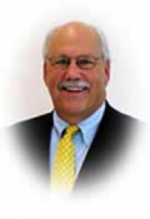F. Michael Saunders is currently Professor Emeritus. He joined the School of Civil & Environmental Engineering (CEE) at Georgia Tech in 1974 and over a period of 34 years held positions of assistant professor (1974-1980), associate professor (1980-1989), professor (1989-2008), and associate chair of the School (2005-2007). He held three tours as Environmental Engineering Group Leader (1977-78; 1989-1997 & 2004-2005). He was a member of the CEE faculty on the Savannah campus as associate director of GT Savannah (2005-2007). At GT he also held positions of adjunct professor in School of Public Policy (1996-2007) and Professor of Bioengineering (2005-2008) and was adjunct professor at Skidaway Institute of Oceanography (1999-2009). He was co-director of the USEPA Hazardous Substance Research Center/South-Southwest (1991-2000) and director (1992-1999) of the GT Office of Environmental Science Technology and Policy (forerunner to Brook Byers Institute for Sustainable Systems). He is Honorary Professor of Environmental Science & Technology in the Department of Natural Sciences at University of Copenhagen, Denmark (2008-2011).In the period of 2007-2009, Professor Saunders was at the National University of Singapore (NUS) as Professor and Chair of the Division of Environmental Science & Engineering (Faculty of Engineering) and founding Director of NUS Environmental Research Institute. Notable accomplishments in Singapore were the build-out and establishment of the Singapore Membrane Technology Centre with GE Energy & NUS and the accreditation of bachelor’s degree program in Environmental Science & Engineering (ESE) through the international Washington Accord. He returned to Atlanta and GA Tech in 2009 in his emeritus position, maintaining professional activities with the exclusion of directly advising doctoral students. He is Honorary Professor of Environmental Science & Technology in the Department of Natural Sciences at University of Copenhagen, Denmark (2008-2011).Professor Saunders has been active in professional societies including AAEE, ASCE, AIPP, ACS, ASM, SETAC, AEESP, ISME, IWA and WEF. Principal society-leadership positions include: President, AEESP; Chair, Executive Committee of Environmental Engineering Division of ASCE; and Vice President of American Institute of Pollution Prevention. He is a registered professional engineer in Georgia. His past editorial positions include: Editorial Board, Clean Products & Processes; Editor, Journal Water Pollution Control Federation; Editor (Founding), Water Environment Research; Chair, Journal Board of Editorial Review of Journal Water Pollution Control Federation; Chair, Journal Board of Editorial Review of Water Environment Research; USA Regional Editor, Environmental Technology Letters; Editorial Board, Environmental Technology Letters; Editorial Board, Fluid-Particle Separation Journal; and Associate Editor, Journal of Environmental Engineering (ASCE).
Water and wastewater reclamation and reuse; potable-water treatment unit operations & processes; transformation, transport and fate of organic and inorganic contaminants in coastal-zone waters and sediments; transformations and fate of mercury in marine and freshwater sediments;, Aquatic-plant assimilation of persistent organic compounds; fate of persistent organics in natural-environment systems of plants, microbes and sediments; phytoremediation and bioremediation of hazardous substances; storm-water characterization and reclamation; characterization and treatment of natural organic matter in surface-waters and wastewater reclamation systems; hazardous substances in sediments, soils and residues; membrane separations;, Activated sludge modeling and removal of recalcitrant organics and nutrients in biological reactor systems; membrane separations within and following bioprocess systems; industrial and municipal residue characterization, treatment and reclamation;, Industrial ecology; sustainable urban systems; water reclamation and reuse in buildings and urban systems.

